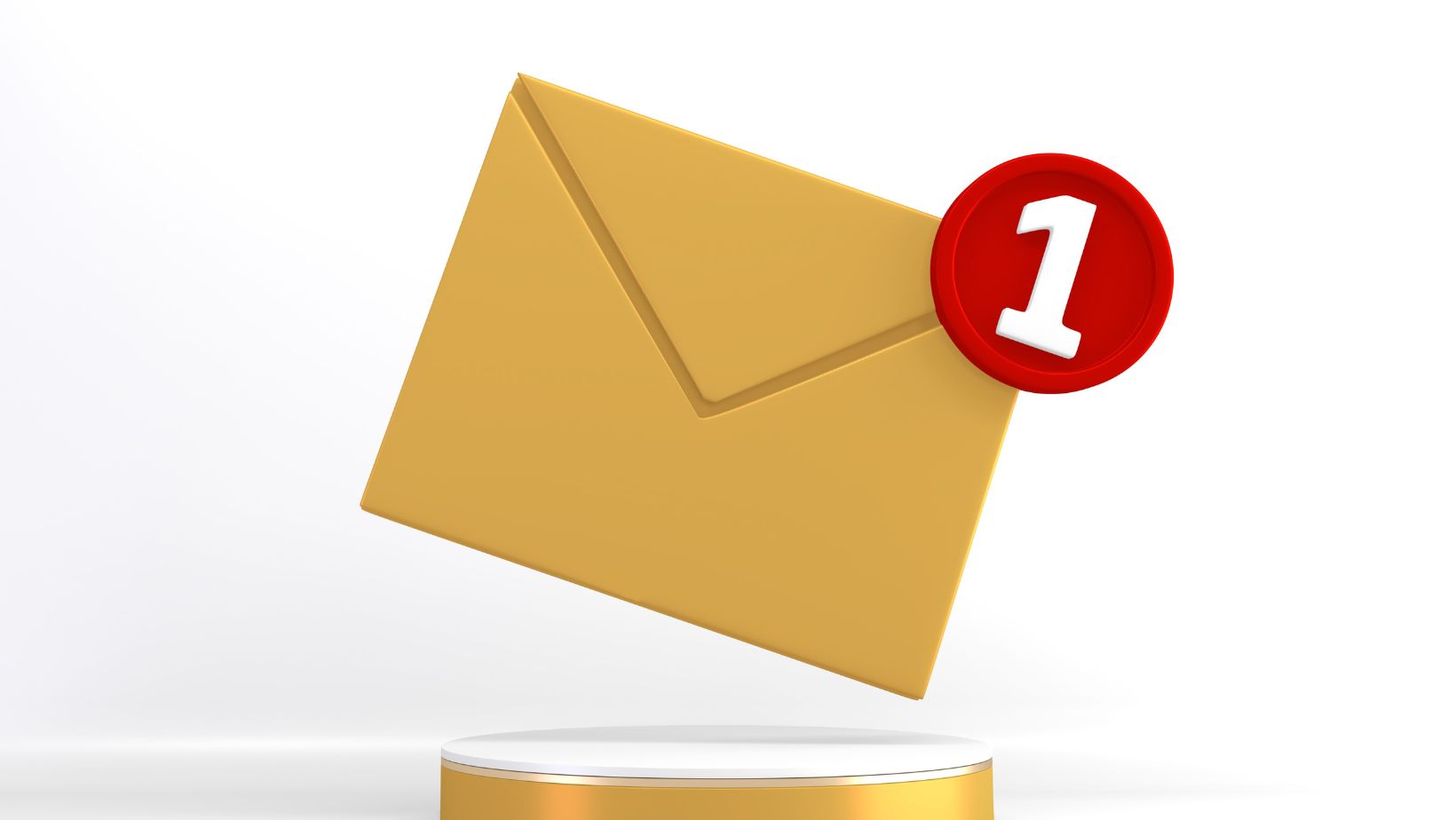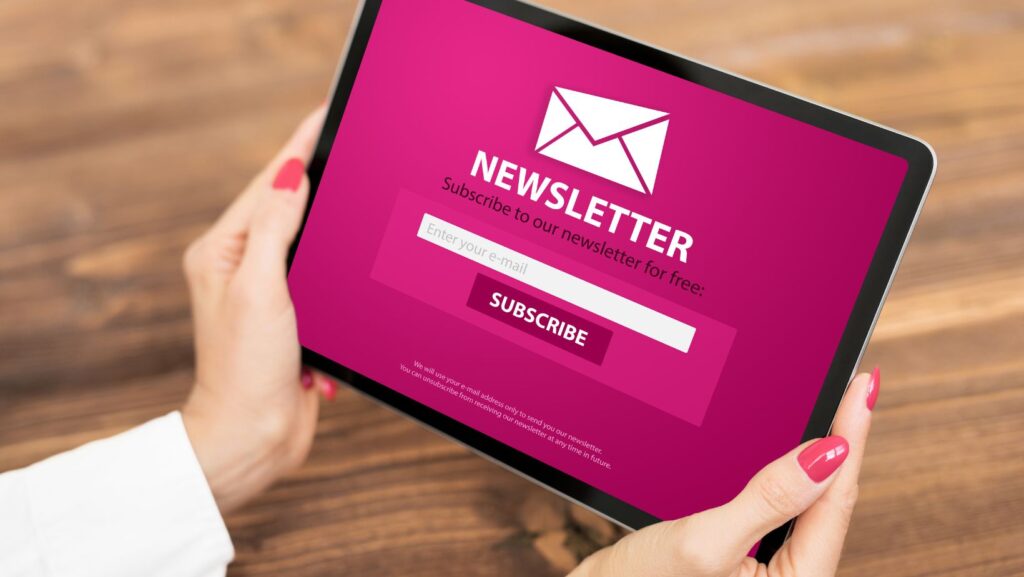Email marketing is arguably one of the best ways to nurture a B2B lead because it allows for gradual relationship development. Where B2C may at times be focused on developing the immediate sale, B2B lead nurturing is the complete opposite and requires ongoing attention. Companies require frequent messaging through education and awareness so that prospects not only see their value, but that they are top of mind for a prolonged buying decision.
Emailing gives businesses the ability to do this deliberately and strategically at all levels of the buying funnel.
A prospect can go from aware to interested to purchased with a synchronized rhythm of emails. From links to articles based on market research to links to product reviews to links to customer testimonials. Email marketing creates the possibilities. Also, with automated email sequences, prospects receive timely and reactive communication as they interact. If a lead downloads a white paper, for instance, they can automatically receive a related resources email. This is the customized attention that creates connections and makes these prospects more likely to convert into paying customers.
Personalizing Emails for Better Engagement
B2B email marketing works because of the ability to personalize. Although the one-size-fits-all approach can be off-putting to some, an email sent directly to your address with acknowledgment of your name makes you feel special, like you’re receiving insider information. Therefore, companies should take advantage of the data to ensure this occurs with personalized campaigns based on company size, industry, previous communications, etc., relative only to the collusion with your company and where they stand in the sales funnel. In addition, email works because it’s accessible. Not only can you see what you sent and what has been opened (clickthrough rates), but you can see what’s been viewed the most, giving you the ability to send more targeted emails based upon such information.
For instance, a lead that inquires about a particular service will receive an email discussing the benefits of that service, along with links to how similar companies have enjoyed the service. An email sent from the cybersecurity department’s email of a technology company goes to those IT managers with a case study of a similarly sized company that improved its security infrastructure. An email from a manufacturing company seeking automation software receives an email detailing how others in the industry achieved greater efficiencies and savings. Personalization with first names, titles of C-level executives, and the acknowledgment of pain points in specific industries are more likely to be opened and engaged with.
And as if simple personalization isn’t sufficient, dynamic email content raises the ante and brings everyone into the fold even more by changing the email message based on live activity. For example, if a prospect visits the site to learn about one particular service, time and time again, a dynamically altered email can include more information about that service, social proof and CTAs for that service. It’s just another way to connect and keep increasingly invested prospects. Segmentation goes a step beyond this on a more intimate level because now companies can further qualify their prospects based on what they did, what they need, or what they want. For example, a SaaS company might have one email drip campaign for those who registered for a demo and one drip campaign for those who merely checked out the pricing page. The ones who registered for the demo can be drip-minded about more advanced features of the software.
The ones who merely checked out the pricing can get a coupon code or an invitation to sign up for a webinar that goes more in-depth about the software’s abilities. It’s on them or not when they are ready to purchase. Additionally, AI email marketing platforms can analyze previous engagement to determine the best times for people to open emails so that companies can send their emails at that moment. Similarly, companies can A/B test subject lines, layouts, and styles to determine what garners the most engagement and offer insight into how to proceed down the line. In today’s world, personalization does not mean more than someone’s first name; it means the proper experience at the proper time with the proper person based on what they’ve done or not done in the past to facilitate transaction needs. Thus, when successful, effective, personalized email campaigns foster customer loyalty and cultivate the B2B relationship to an impressive extent in increased conversion rates.
Using Educational Content to Build Trust
This matters because B2B buyers are exploring. Furthermore, the need for email marketing solidifies a brand as one in need of direction and a trustworthy partner, which adds to one’s credibility and hopefully response from the ultimate decision-maker. Therefore, a regular email cadence with properly curated assets from white papers to instructional videos to panels of experts keeps the leads warm and informed. For example, if someone is stuck between choosing software A or B, and one of these how-to-email opportunities exists that outlines the differences (pros and cons), sending it in the email allows the prospect to make the right decision.
Then there’s always video. A recorded webinar on industry trends or a customer success story can be recorded and similarly sent, with a brief email welcoming leads to a limited opportunity that capitalizes on the recent correspondence and subsequent engagement. An ongoing flow of such endeavors not only supports future partnership possibilities but generates loyalty and keeps the brand in everyone’s mind.
Automating Lead Nurturing with Email Sequences
There’s no time to personally connect with each and every lead and B2B conversions can take months to materialize. Email sequences allow companies to keep in touch with leads without lower-quality leads being neglected (the sales team is just focused on the biggest potential gain). With automation. Meaning that as soon as someone gets added to the queue upon entry to the database, they will receive certain emails in a predetermined email sequence.
For example, if someone downloads an eBook, he or she will get a follow-up email a few days later with links to related blog posts and then a third email after that sending a case study of a similar company that found success using the solution. Over time, these pieces of content get them further along in the sales process. Trigger-based email is like automated email on steroids. Someone visits the pricing page, interacts, and if they don’t schedule a demo, an email gets sent afterwards with the opportunity for a consultation or lower price to close that deal. The opportunity to engage is never missed.
Aligning Email Marketing with Sales Efforts
Yet, without the sales team in sync with the advancements, B2B lead nurturing fails, as well, for prospects grow cold, messages get forgotten in translation, or, even worse, the prospect never knows that someone is attempting to reach them. How to Test Email Deliverability Effectively becomes a crucial consideration to ensure that outreach efforts are reaching prospects’ inboxes rather than being lost in spam folders. Email marketing integration via CRM integrations keeps the sales team in the loop, as well, with any developments on leads as they can see what emails were opened, what links were clicked, and how much a prospect has delved into showing interest.

Thus, sales can reach out with specific personalizations based on how interested the prospect is. So, for example, if someone is in a drip campaign of emails regarding one product feature, the sales team understands to discuss that feature, as opposed to providing vague, general information. This situational awareness empowers teams to connect at the appropriate time with appropriate messaging because they know what the prospect interacted with previously.
Measuring the Success of B2B Email Campaigns
This is why metrics need to be monitored and calibrated for enhancement. Companies must assess open rates, click-throughs, and conversion rates to know what correspondence sent to the leads is successful and what is not, requiring recalibration. Moreover, A/B testing subject lines, formatting/design of emails, and content types showcases what works best for engagement. For instance, A/B testing to determine whether leads gravitate more toward case studies or product demos can better align subsequent initiatives.
In addition to real-time engagement metrics, however, companies need to know how email marketing affects long-term lead conversion. Are nurtured leads converting down the line? Are they signing up for demos or getting on calls because of a certain email? When email marketers are aware of this, they can more adequately adjust their strategy.
Optimizing Email Frequency and Timing
Unfortunately, while email marketing for lead nurturing is effective, too much communication via email to prospective purchasers can have the opposite effect. Therefore, without overwhelming leads, considerations must be given to frequency and timing. The ideal frequency is enough to send these at a necessary pace to encourage brand awareness and not enough to send to be excessively bothersome. The ability to test send times gives a company insight into when its leads are most likely to open an email and read through one. For example, certain industries have clientele that are more responsive to morning emails versus afternoon ones.
A more corporate B2B audience would be more receptive to marketing outreach during the typical workday; however, an e-commerce brand might find that an email marketing campaign sent on a Friday night or on a Saturday when the target market isn’t at work and has time to shop works better. The benefits of the analytics and reporting features also allow for open rates, click-through rates, and conversion rates to be tracked over time to see when certain campaigns fared better than new campaigns. When a business knows when their audience is online, they can reach them at that time. In addition, the volume of emails should be relative to the lead’s position in the buying process, too.
A brand new lead merely subscribing to a newsletter or downloading a white paper could benefit from a higher touch of more educational content industry updates, case studies, product how-tos as they have a longer time in the buying process and need to establish trust and understanding of what the brand can do for them. For example, a lead who is ready to buy and further along does not need as much educational content in general emails, but instead, less with specific calls to action for a demo, a quote, or a free trial. This maintains engagement without overwhelming the prospect.
Even segmentation of engagement-based automation can adjust email cadence. For instance, if someone is constantly opening and engaging with your emails, they may be more suited to a bombardment/high-frequency approach with links to useful information (like discount offers or informational reviews). However, if a lead has skipped a few of your emails in a row, reducing email cadence or experimenting with something like a re-engagement campaign keeps them engaged without giving up and hitting unsubscribe.
However, it’s not only about how often a lead contacts the brand. It’s also about content changes taken into consideration. If one week they’re sending a more informed submittal email and the following week a product pitch, and then the week after an article or case study related to the industry from other clients, then leads are much less likely to feel overwhelmed with a constant push to sell. They realize that they’re receiving relevant information for themselves and their businesses, which cultivates credibility and makes the company appear to be an expert in the field.
Where metrics for delivery, engagement, and frequency of content are all on point in email marketing. Where response rates are monitored because audiences are that engaged, and changes can be made in the second because people either buy or use it all the time. Where people are involved from start to finish in the buying process, and as such, they convert more and come back as repeat customers.
Conclusion
Email marketing is essential for B2B lead nurturing. It establishes a patterned approach to reaching out, educating, and converting prospects to paying customers.

Between personalized touches, automated efforts, a sales team focus, and expected measuring efforts, a company can offer a uniform experience to its leads that accelerates transactions through the sales funnel. Therefore, B2B email marketing nurtures and fosters relationships. In order for a company to be seen as a leader in its field and for companies to operate from the inside out as competitively as the outside professional world allows, those that dedicate the time to nurturing email opportunities are more likely to successfully sustain relationships with clients for an ongoing stream of revenue.
